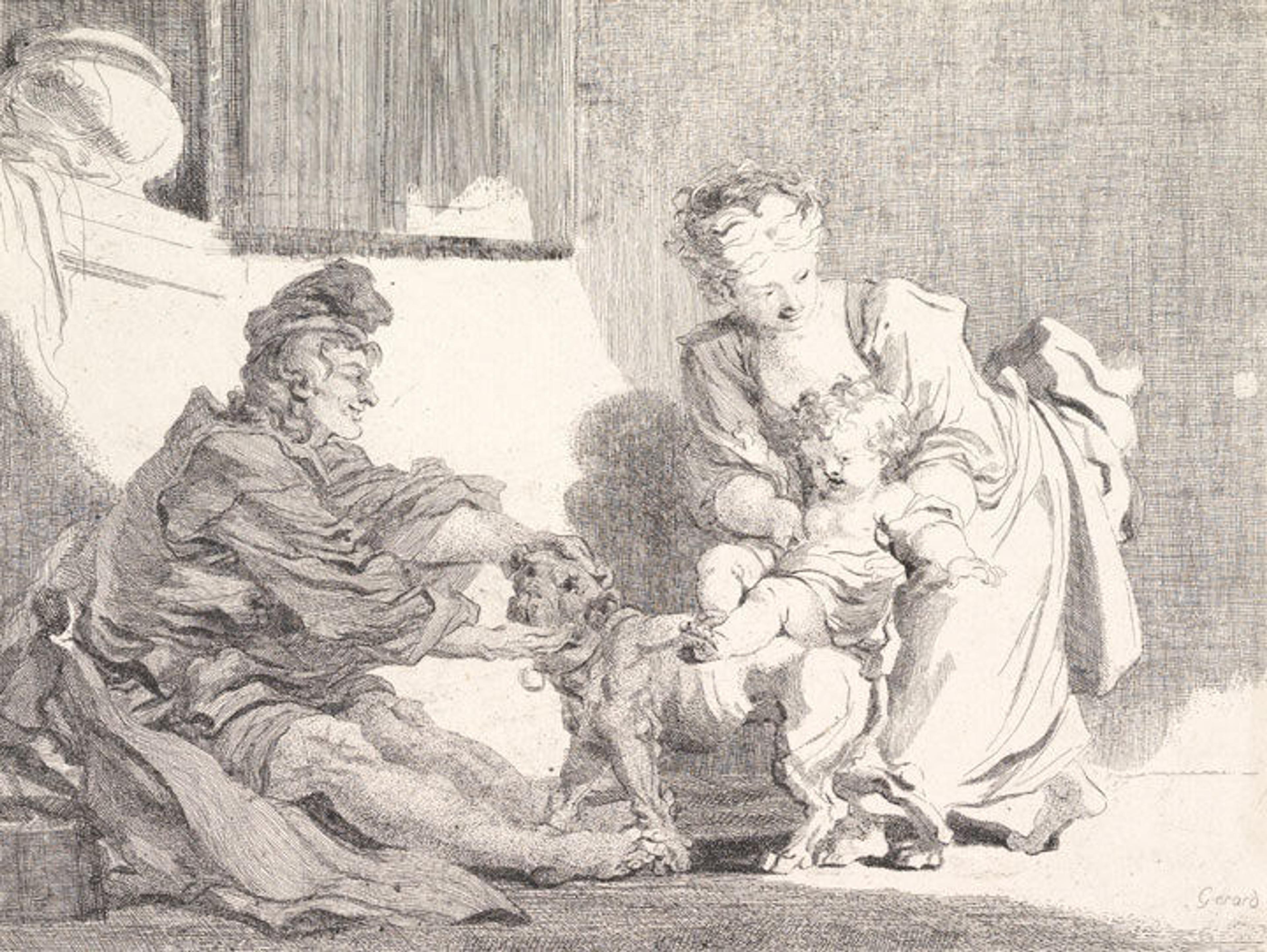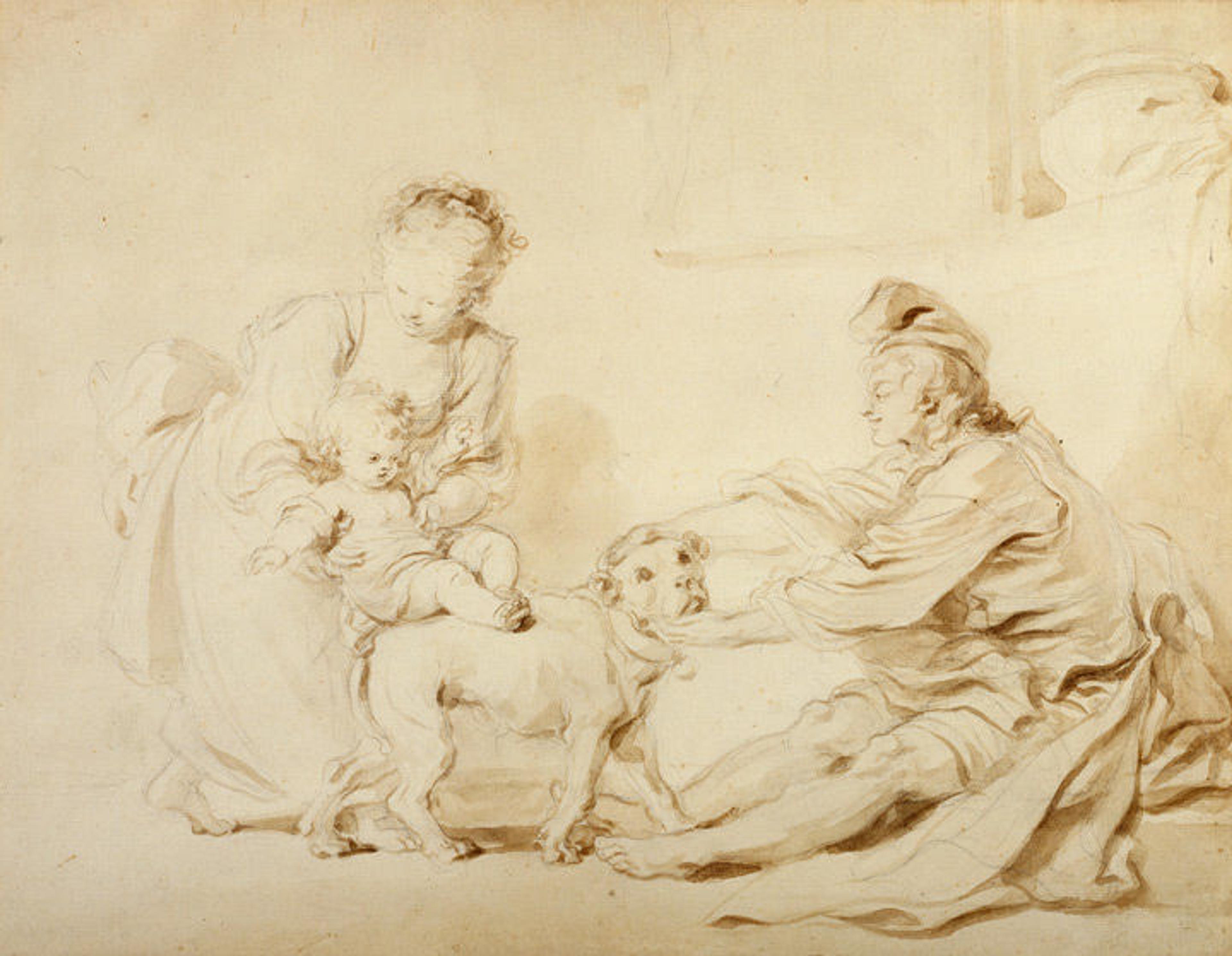
Fig. 1. Marguerite Gérard (French, 1761–1837). The Child and the Bulldog, 1778. Etching, second state of three, 6 7/8 x 8 7/8 in. (17.4 x 22.4 cm). The Metropolitan Museum of Art, New York, Purchase, Phyllis D. Massar Gift, 2011 (2011.279)
«There were few opportunities for women to become painters in pre-revolutionary France. Those that did were most often from artistic families and received their training from male relatives. Such was the case with Marguerite Gérard, the younger sister of Fragonard's wife, Marie-Anne Gérard. When the teenage Marguerite left her childhood home in the south of France to join her sister in the French capital, she found herself ensconced in the Louvre, a royal building that housed the apartments and studios of the great artists of the day. Like her older sister, who was a painter of miniatures, Marguerite aspired to become an artist, and her famous brother-in-law apparently encouraged her ambitions.»
The earliest evidence we have of Marguerite's training is in the form of a series of prints she made under Fragonard's tutelage, beginning in early 1778, when she was 16 years old. As an initial step, he introduced her to the technique of etching, a process in which one uses a metal stylus to "draw" on a copper plate covered in a ground that would be scraped away by the needle. The etching plate would then be placed in acid to eat away at the areas of exposed metal and to create furrows that would hold ink that could then be printed onto paper.
As was common studio practice at the time, the student, Marguerite, based her etchings on drawings by the master, Fragonard. In this case, the model for an etching of hers on view in Fragonard: Drawing Triumphant—Works from New York Collections (fig. 1) was a drawing of Fragonard's now in the collection of the Brooklyn Museum (fig. 2) that depicts a young child receiving his first "riding lesson" on the back of the family dog. The composition of the print essentially repeats that of the drawing, albeit in reverse—a natural result of the printing process.

Fig. 2. Jean Honoré Fragonard (French, 1732–1806). The First Riding Lesson, ca. 1775–78. Brush and brown wash over black chalk underdrawing, 13 3/4 x 17 3/4 in. (34.8 x 45.1 cm). Brooklyn Museum, New York, Gift of Mr. and Mrs. Alastair B. Martin, the Guennol Collection, 1957 (57.189)
The print is also considerably smaller in format, which suggests that Marguerite and Fragonard may have made use of a tool like a pantograph to reduce the scale of the image while accurately transferring the contours of the forms from the drawing to the copper plate. Marguerite used a technique of carefully controlled hatching (parallel lines) to suggest the broad areas of tone achieved in the drawing by brush and wash. She also exposed the plate to acid in several steps to emulate the broad range of tones in Fragonard's drawing.
Over the course of several months, Marguerite made five prints based on her brother-in-law's drawings. Their bold graphic sensibility led many later scholars to insinuate that Fragonard had guided her hand, although we now believe the teenage Marguerite to be the sole author of this body of prints. She would eventually move on to the technique of oil painting, where she would forge a successful career.
Fragonard's son, Alexandre-Evariste, born in 1780, would also go on to become a painter. The closeness of this artistically inclined family is suggested in an informal sketch showing them from behind, seated on a long bench (fig. 3). Fragonard whispers in his wife's ear as he climbs over the bench; Alexandre Evariste, second from the left, is indicated by his nickname, "Fanfan"; and Marguerite, now a young woman, is seen sitting tall at the right end of the bench.

Fig. 3. Jean Honoré Fragonard (French, 1732–1806). Fragonard and His Family on a Bench, ca. 1786. Black chalk with pen and brown ink, 7 1/8 x 9 1/8 in. (17.9 x 23.2 cm). Musée Jean-Honoré Fragonard, Grasse
Related Links
Fragonard: Drawing Triumphant—Works from New York Collections, on view at The Met Fifth Avenue through January 8, 2017